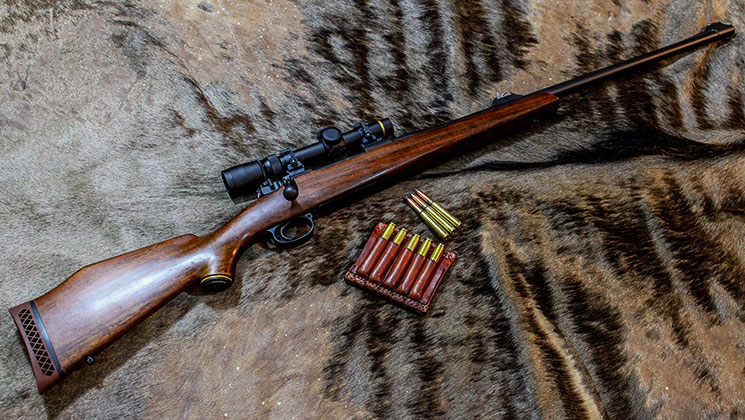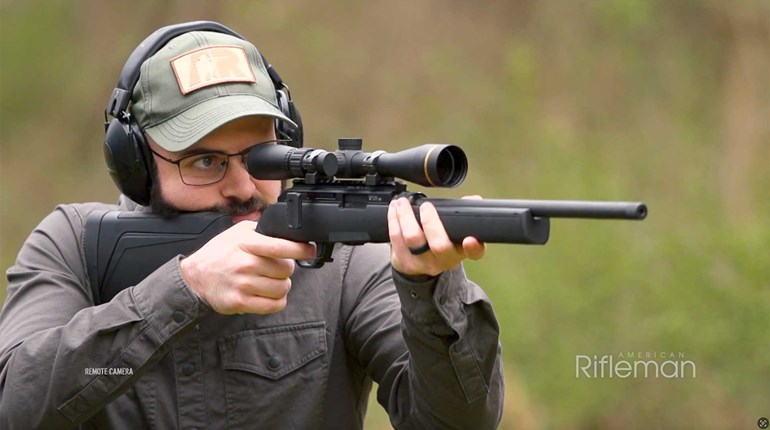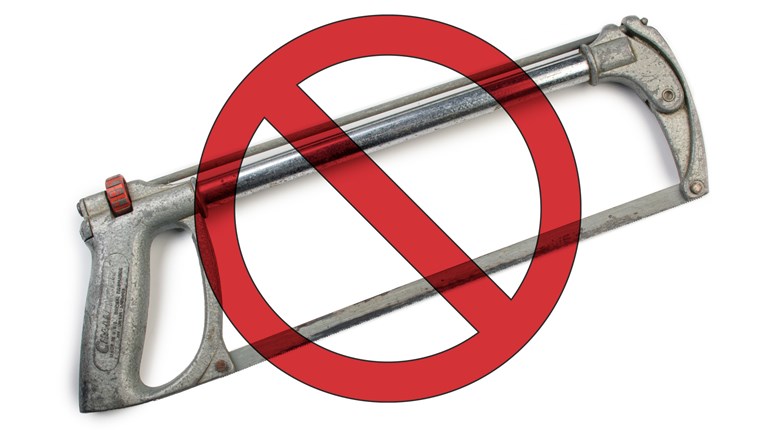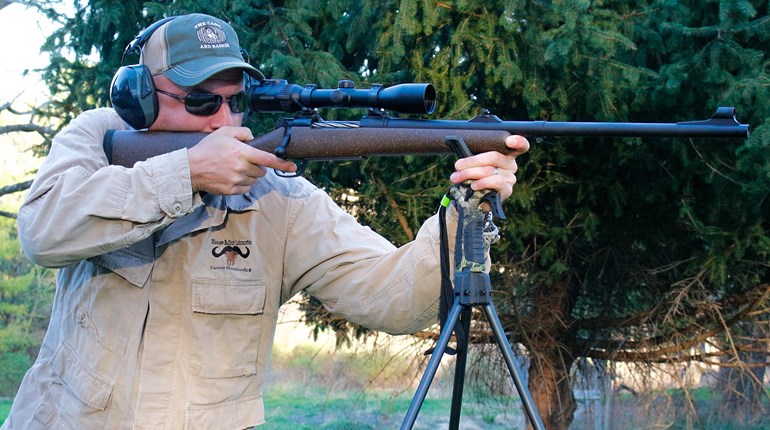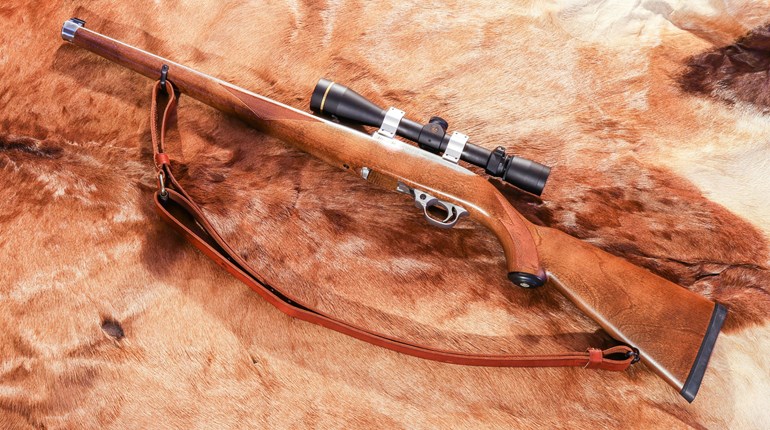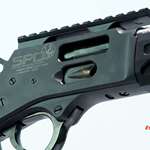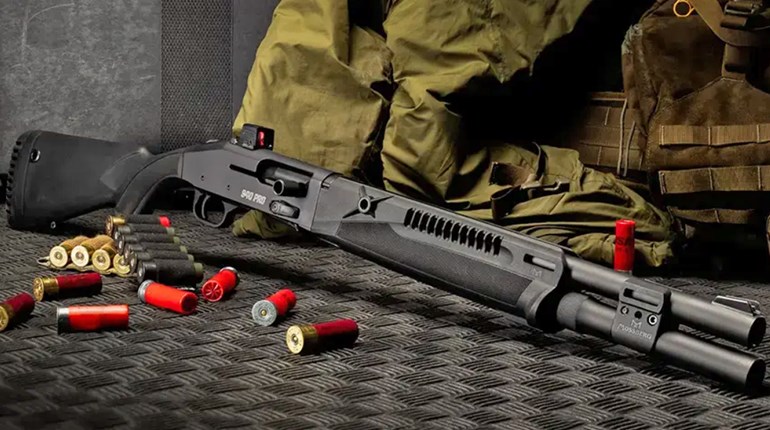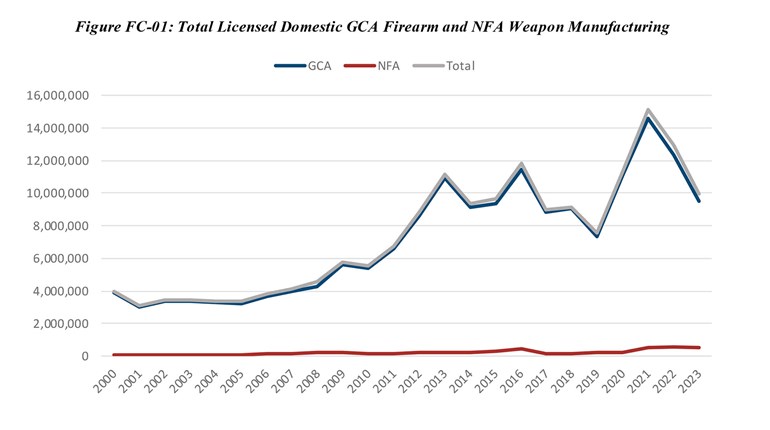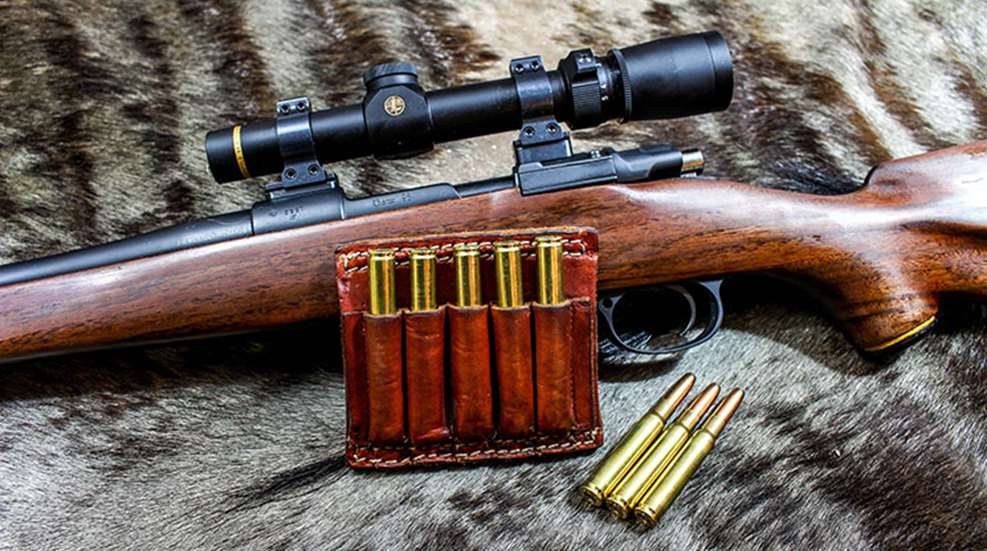
It had sat in a corner of a friend’s basement—muzzle down on the concrete floor—for as long as I’d known him. Being a curious young man, I asked about the rifle; where it came from, why it just sat there, what were his plans for it, etc.
“I think my grandfather brought that back from the War; nobody’s looked at it for a long time. Make me an offer.”
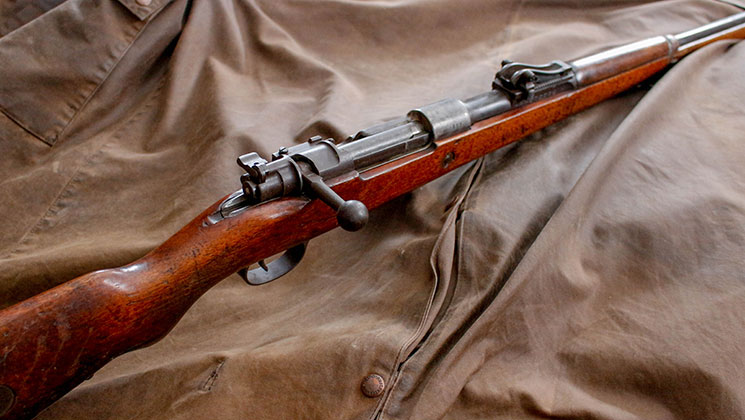
A paltry sum of cash was exchanged, and I found myself in possession of a 1916 Amberg Arsenal German 98 Mauser, chambered for the 8x57 cartridge. Although it showed signs of neglect and age, the rifle functioned, and all the serial numbers—2117, to be precise—were matching. The muzzle and the first three inches of the barrel were so badly pitted that I didn’t dare fire it for fear of injury, but I still thought it was a cool piece of history. The straight bolt, that classic and finely-engineered elevated rear sight, a bayonet lug and all the features of a WWI 98 Mauser were there. I do appreciate military firearms, and though this would’ve made a great wall-hanger, I had different plans for it: one day this would become a custom hunting rifle.
Two decades and more went by, while both time and financial constraints precluded me from beginning the project. Sitting on a deer stand, watching the squirrels hold their acorn worshipping festivities, my thoughts wandered back to that Gewehr 98, and what I might use it for. I went through my lineup of rifles and cartridges, and decided on an oddball. I happen to be a huge fan of the early 20th century British cartridges—especially those used for African big game—and while I have several rifles for truly big game, I wanted a rifle that would pair well with those, yet still be useful here in America. Surely a .275 Rigby (you may know it as the 7x57 Mauser) would be cool, as would a .300 H&H Magnum. Maybe a .333 Jeffery, but that would require some rather extensive modification to the 98 action. Based on the writings of John ‘Pondoro’ Taylor, and later of my pal Craig Boddington, the .318 Westley Richards popped into mind. Using a .330-inch diameter bullet of 250 grains, at a sedate muzzle velocity of 2,400 fps, it had a stellar reputation a century ago, only to be unseated by the .375 H&H Magnum as the all-around African cartridge. Yes, this would work! No bolt face modification would be necessary, the existing magazine follower would work, and though the bullets might need to be seated a bit deeper than normal, it would fit the 98 receiver nicely. And to say it’s a classic is an understatement; even W.D.M. Bell spent time with a .318 WR.
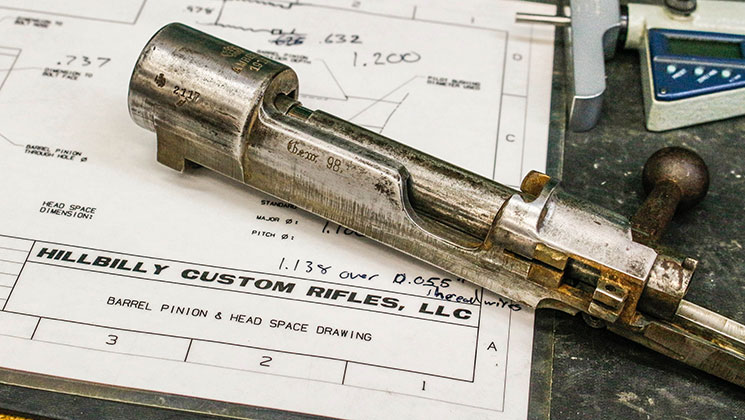
I was at the Great American Outdoor Show in Harrisburg, Pennsylvania when I proposed the idea of the build to my buddy Nathan Chesney of Hillbilly Rifles. While Nathan usually cranks out a much more modern style of hunting rifle, he was onboard for what we would dub a ‘working-man’s’ custom gun. We would retain the action and bottom metal from the WWI rifle, and customize the rest.
We started with a nice Krieger barrel, of medium contour, and settled on a length of 25 inches to balance the package. As I’d definitely want to use a scope on this rifle, the traditional Mauser flag safety would need to be replaced. Brownell’s solved that problem, with a nice Winchester 70-style three-position wing safety, allowing for a low scope mount. The two-stage military trigger would need to go as well, and we opted for a nice, crisp Timney replacement trigger. That right-angle bolt handle would have to be replaced, so I procured a straight bolt with a smooth knob, for a sort of classic look.
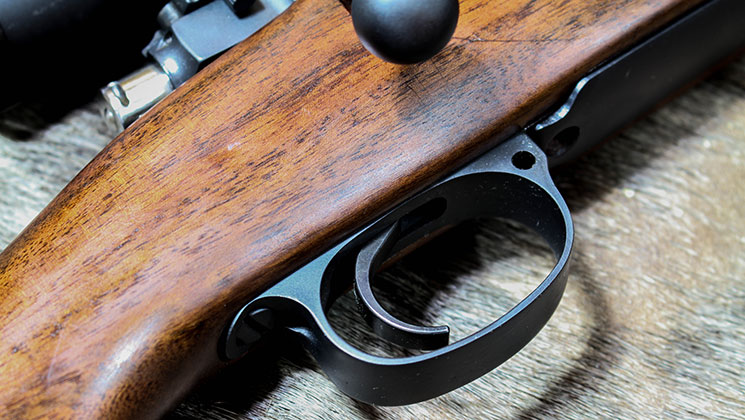
Nathan cleaned up the action—which had produced some serious rust over the last century—and we got together to install the barrel and ream the chamber. The guys at 4D Reamer Rentals provided the chamber reamer and a set of go/no go gauges. I got to watch Nathan work his magic cutting the barrel threads and chamber, and even got to help a bit. Within a couple hours, we were getting closer. Once the action was up and rolling, Nathan installed a New England Custom Gun barrel-band, front sight and a rear island sight base. This was starting to take shape!
For a stock, I had ordered a Boyd’s laminate sporter stock, but there was an issue with the inletting for the bottom metal; it was about 1/8-inch offset and wouldn’t work. I picked up a used walnut sporter stock from eBay for about $100; based on the styling and the white-line spacer, it must date back to the late 1950s or early 1960s. While the stock is a work in progress—I’ll definitely have that forend slimmed down this winter—it’s functional for this season.
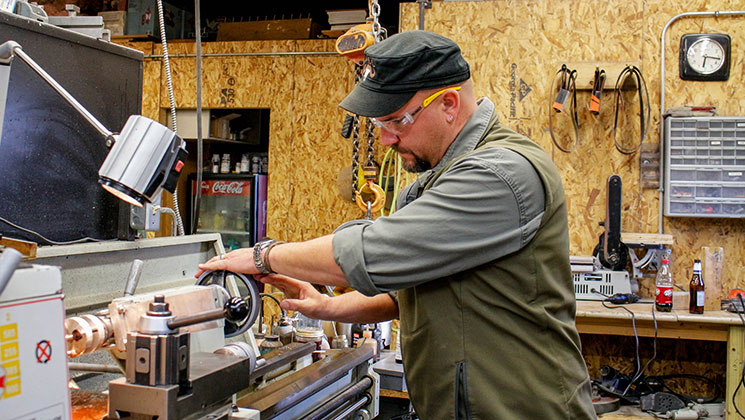
I decided I wanted a matte bluing, to minimize reflection in the African sun, so the guys at Dark Horse Gunsmithing handled those duties. The receiver was drilled and tapped to receive Talley bases and detachable rings, which in turn would hold a Leupold VX-3i 1.5-5x20 scope; perfect for almost all medium range hunting that the .318 handles so well.
Is it a masterpiece of a rifle? Certainly not, and it wasn’t designed to be. Nathan and I wanted a dependable, affordable and accurate rifle made for the hunting fields. The stock needs—and will receive—some TLC to make it feel a bit better. But, the rifle is a shooter. Factory ammunition for the .318 Westley Richards is limited to one source—Kynoch—and it is very, very expensive. No worries though, I made my own brass from some .30-06 Springfield, and my handloaded ammunition will drive 250-grain Woodleigh Weldcore round-nosed bullets at 2,380 fps into one-inch groups at 100 yards.
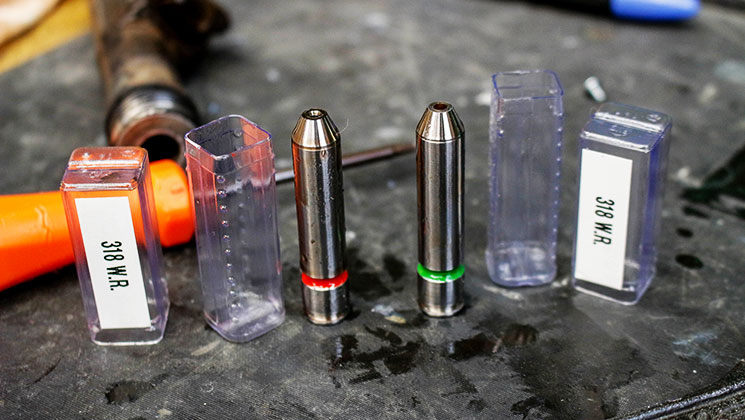
This rifle is a work in progress. I’m fitting the rear sight—with a fixed 140-degree wide-V fixed sight and a flip-up finer sight—as I write this, and in addition to the stock work, I’m seriously thinking about adding a barrel-band sling attachment. But the rifle, as it stands now, is a functioning, accurate hunting rifle that started life as a battlefield implement, and with some hard work (for the gunsmith, anyway) and some forethought became a unique and personal piece. The cost of purchasing a vintage .318 Westley Richards built on a period-specific Mauser 98 action is at least ten times what I’ve invested in this rifle, so I’ve essentially made that which I couldn’t afford. The little things, like a well-fitted safety and trigger, only accentuate the time-proven performance of the 98 Mauser, and the process of building a custom rifle was certainly an eye-opener to me.
If you want the custom rifle experience, one of those older Mausers makes a great platform. Though there are other options, the Gewehr 98 action is one very strong platform, capable of handling some of our most powerful cartridges. It was, and is, a fun process for me, and I’m very happy to own this gun. I don’t know where it’s been or what it’s seen, but I know I intend to make some great memories with it, and extend the life of this historic piece.
